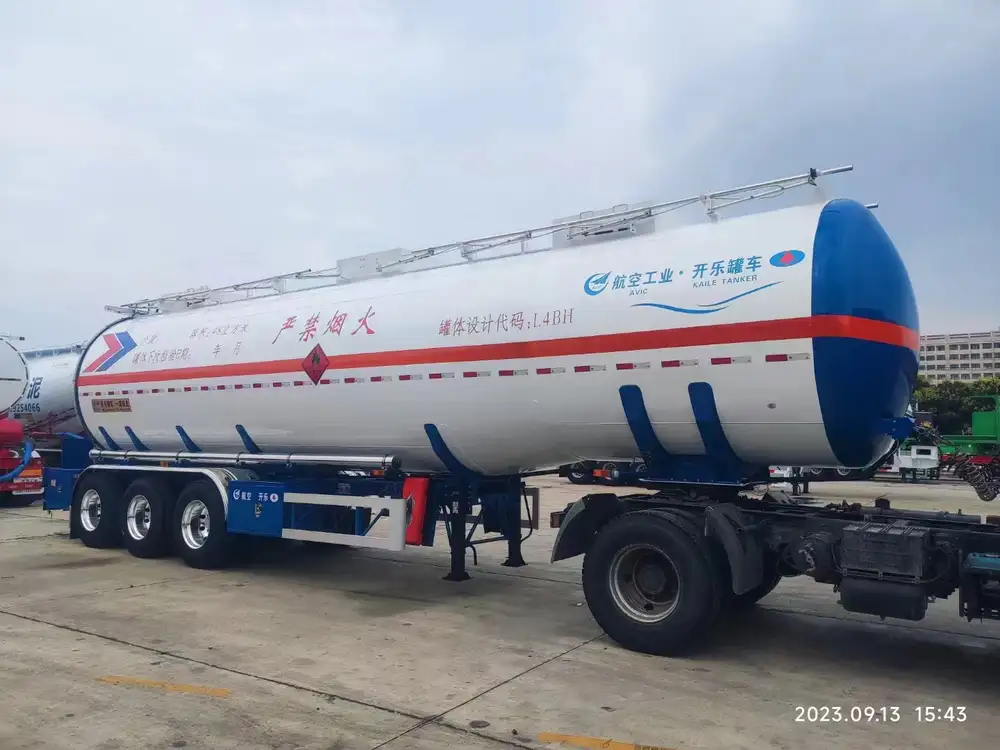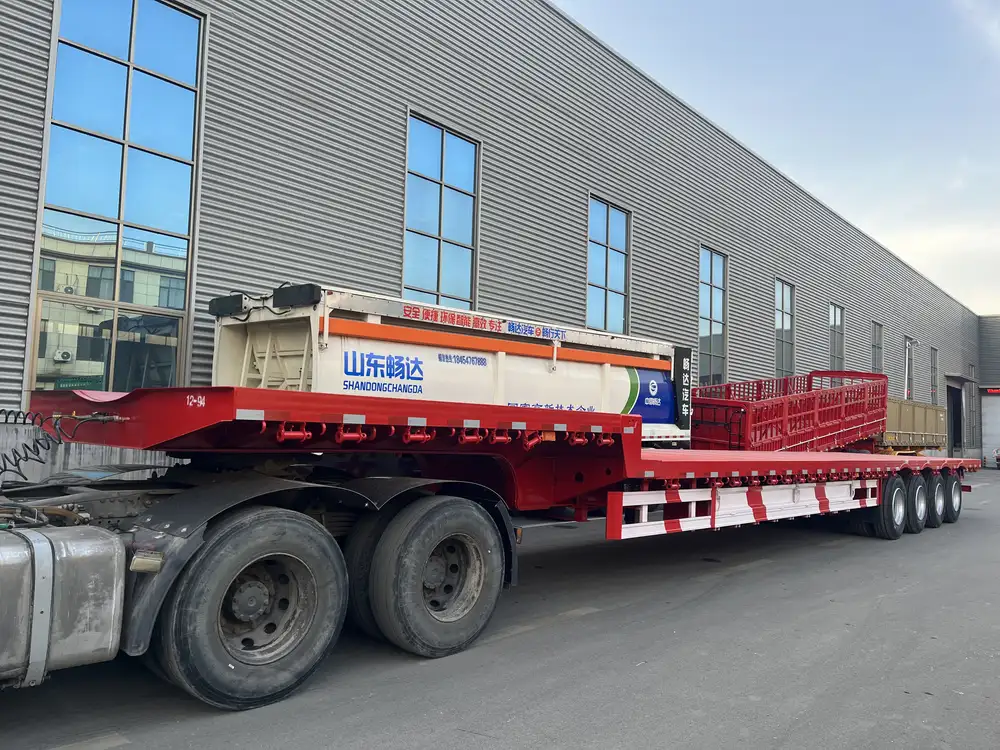When it comes to hauling bulky materials in construction, landscaping, and agricultural settings, dump trailers are a valuable piece of machinery. Their design allows them to transport a variety of loads and dump them efficiently, making them indispensable for many industries. However, understanding the weight capacity of a dump trailer is critical before making a purchase or utilizing one for specific tasks.
Table of Contents
- Understanding Dump Trailer Capacity
- Factors Affecting Weight Capacity
- Typical Weight Capacities of Dump Trailers
- Choosing the Right Dump Trailer for Your Needs
- Maintenance Tips for Maximizing Load Capacity
- Safety Considerations When Hauling
- FAQs About Dump Trailer Capacity
- Conclusion
Understanding Dump Trailer Capacity
Dump trailers, robust and efficient, are designed for specific load capacities that can vary significantly from model to model. Generally, these capacities can range anywhere from a few thousand pounds to over 20,000 pounds, depending on the trailer’s construction and configuration. Knowing how to interpret these ratings is essential for optimal performance, as overloading can lead to mechanical failure, safety hazards, and legal repercussions.

Gross Vehicle Weight Rating (GVWR)
The Gross Vehicle Weight Rating (GVWR) is a key component in understanding a dump trailer’s capacity. It refers to the maximum weight a trailer can safely haul, including its own weight. Importantly, exceeding the GVWR can result in serious consequences, including fines and increased risk of accidents.
Factors Affecting Weight Capacity
When choosing a dump trailer, several factors contribute to its overall weight capacity. Understanding these elements is crucial for making informed decisions.
Trailer Construction Materials
The materials used in the construction of a dump trailer significantly influence its weight capacity. Common materials include:
- Steel: Known for its strength and durability, steel construction allows higher load capacities. However, it’s also heavier, which can reduce the net weight capacity.
- Aluminum: While lighter than steel, aluminum may not handle as much weight, but its corrosion resistance makes it suitable for certain environments.

Comparison Table of Materials
| Material | Weight (lbs) | Durability | Cost (Per Trailer) | Common Use Cases |
|---|---|---|---|---|
| Steel | Heavier | Very Durable | $4,000 – $8,000 | Heavy Loads |
| Aluminum | Lighter | Moderate Durability | $5,000 – $10,000 | Corrosive Environments |
Axle Configuration
The axle configuration affects the gross weight that a trailer can carry. Generally, more axles will increase the weight capacity but will also affect maneuverability.
- Single Axle Trailers: Typically carry lighter loads (approximately 3,000 – 7,000 pounds).
- Tandem Axle Trailers: Can handle 7,000 – 14,000 pounds.
- Triple Axle Trailers: Designed for heavy-duty tasks, capable of hauling over 14,000 pounds.
Load Distribution
Proper load distribution is paramount for ensuring stability and safety. An unevenly distributed load can lead to issues such as swaying or tipping. This is particularly important to observe when using dump trailers, as improper loading could exceed the trailer’s intended capacity.

Typical Weight Capacities of Dump Trailers
To provide a clearer picture of what to expect, we present a basic guideline on the weight capacities of various dump trailers commonly found on the market.
- Small Dump Trailers (5×8 ft): GVWR of around 3,000 – 7,000 pounds
- Medium Dump Trailers (full-size, 6×10 ft): GVWR of approximately 10,000 – 14,000 pounds
- Large Dump Trailers (10 ft and above): GVWR can exceed 20,000 pounds
Weight Capacity Guide
| Trailer Size | Estimated GVWR | Typical Load Usage |
|---|---|---|
| Small (5×8 ft) | 3,000 – 7,000 | Landscaping, Small Removals |
| Medium (6×10 ft) | 10,000 – 14,000 | Construction, General Hauling |
| Large (10 ft+) | 20,000+ | Heavy Machinery, Bulk Loads |
Choosing the Right Dump Trailer for Your Needs
When selecting a dump trailer, it is essential to align its capabilities with your intended use. Several types exist, each tailored for different applications.

Types of Dump Trailers
- Standard Dump Trailers: Most common, offers straightforward operation for various materials.
- Gooseneck Dump Trailers: Provide better stability and increased weight capacity, often preferred for heavy-duty tasks.
- Tilt Trailers: Designed for lighter loads and facilitate easy loading and unloading.
Common Applications
Dump trailers are versatile and suited to various industries, including:
- Construction: For transporting gravel, dirt, or debris after demolition.
- Landscaping: To haul mulch, soil, and plants.
- Agriculture: Typically used for bulk materials like feed or fertilizers.
Maintenance Tips for Maximizing Load Capacity
Proper maintenance not only extends the life of your dump trailer but also ensures it operates at its full capacity.
- Regular Inspections: Check integrity of the frame, axles, and hydraulic systems for wear and tear.
- Tire Maintenance: Inspect tire pressure regularly and ensure they are rated for the load intended to be hauled.
- Cleaning: Remove debris from the trailer bed to prevent rust and damage.

Safety Considerations When Hauling
Safety cannot be overemphasized when using dump trailers. Adhering to these principles mitigates risks:
- Know the Limits: Always adhere to the GVWR and specific load ratings.
- Secure Loads: Ensure that all materials are properly secured to prevent shifting during transit.
- Use Brake Systems: Familiarize yourself with proper use of brake systems, especially in loaded conditions.
Best Practices for Towing and Dumping
| Safety Practice | Description |
|---|---|
| Pre-Trip Inspection | Check tires, brakes, and hitch connections |
| Weight Distribution | Load materials evenly and low to the ground |
| Emergency Procedures | Know how to stop safely and manage an unexpected load shift |
FAQs About Dump Trailer Capacity
1. What does GVWR stand for?
GVWR stands for Gross Vehicle Weight Rating, indicating the maximum safe weight a trailer can carry.
2. Can I modify my dump trailer to increase its capacity?
Modifications may compromise safety and violate regulations; it’s advisable to consult a professional.
3. How do I calculate the weight of my load?
Use a scale to weigh materials before hauling; if unavailable, approximate using conversion factors based on materials (e.g., cubic yards to pounds).
4. Are there legal weight limits for dumping materials?
Yes, each state has legal limits for weight without a special permit. Always check local regulations.

Conclusion
Understanding how much weight a dump trailer can haul involves comprehending various technical specifications and real-world applications. With the various factors influencing capacity—from material construction to axle configuration—selecting the right dump trailer is critical for efficiency and safety in your hauling operations. By adhering to maintenance protocols and safety considerations, you can maximize your trailer’s performance while mitigating risks. Whether you’re in construction, agriculture, or landscaping, making an informed choice about your dump trailer can lead to significant operational advantages.



